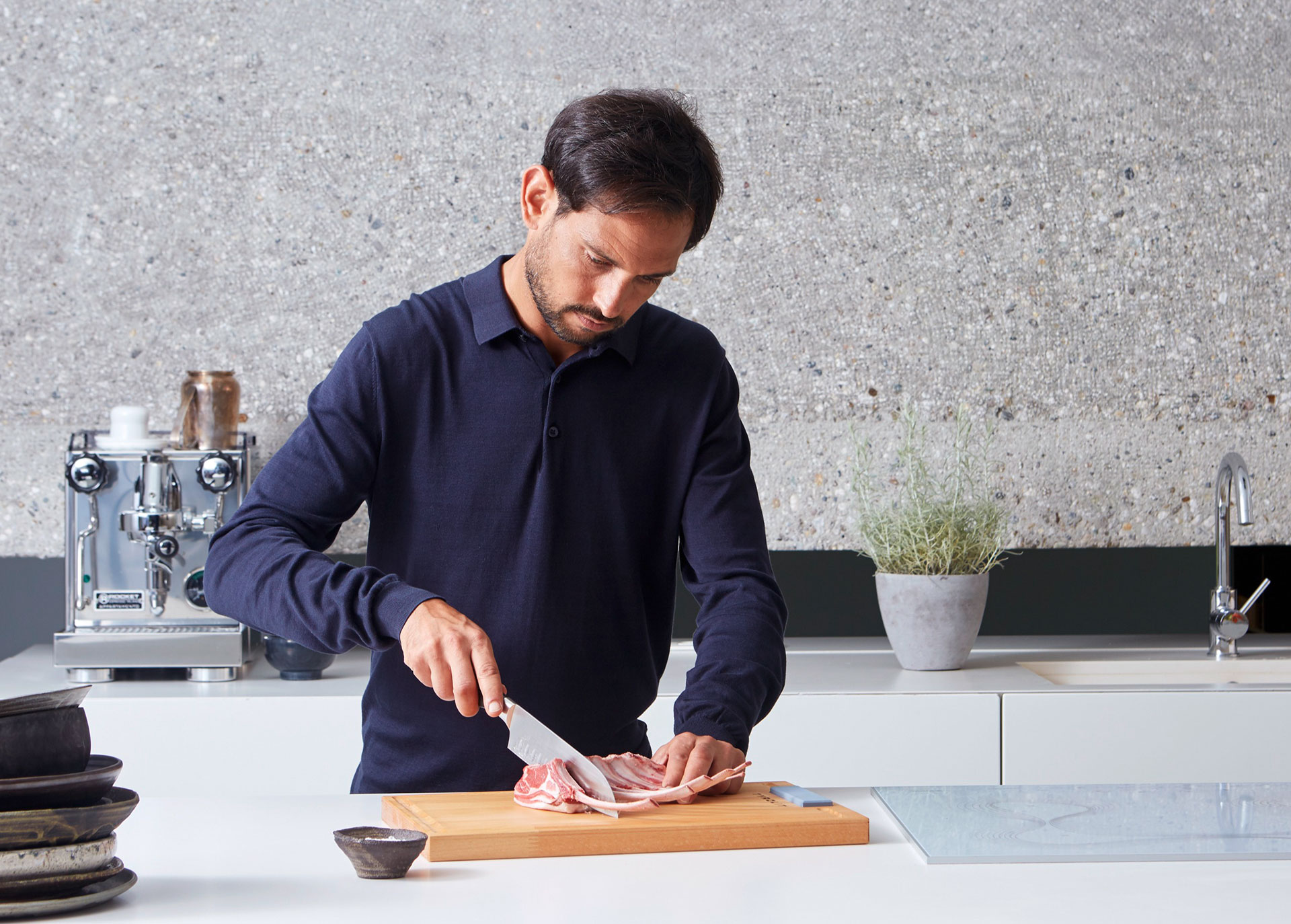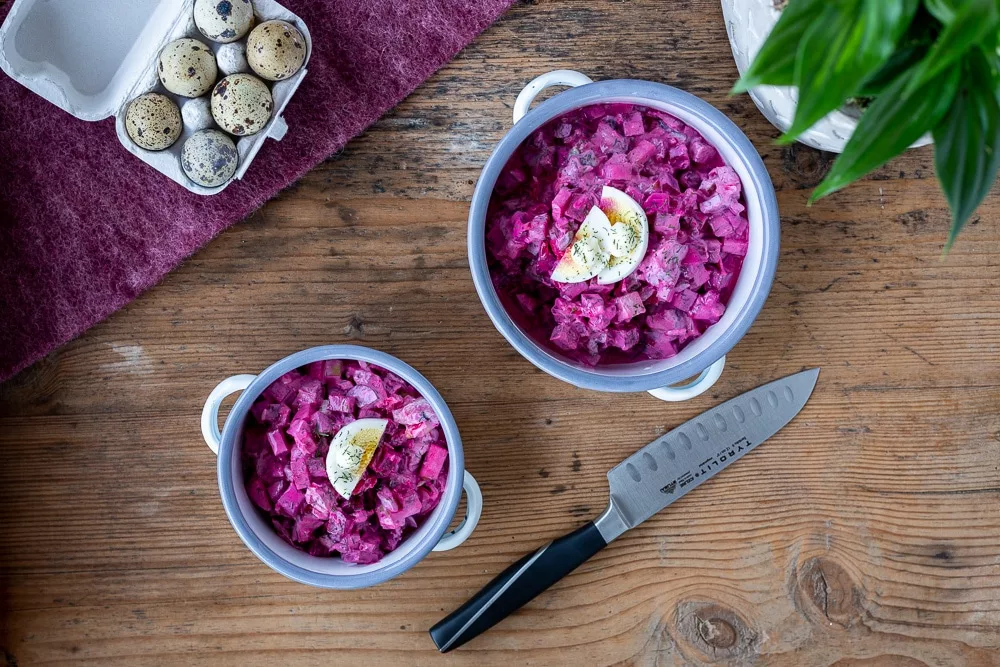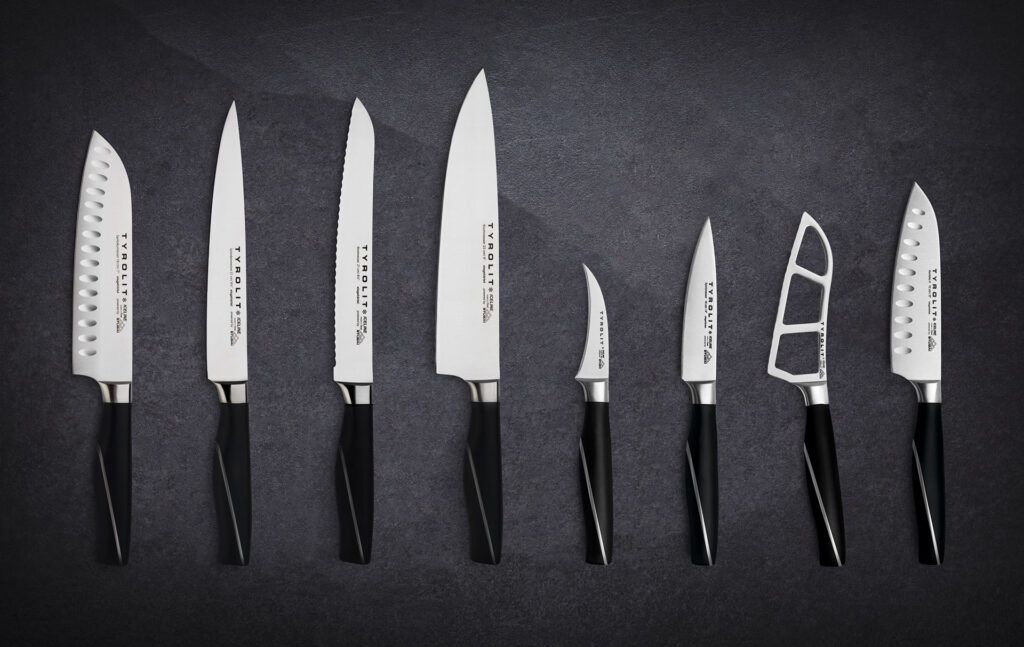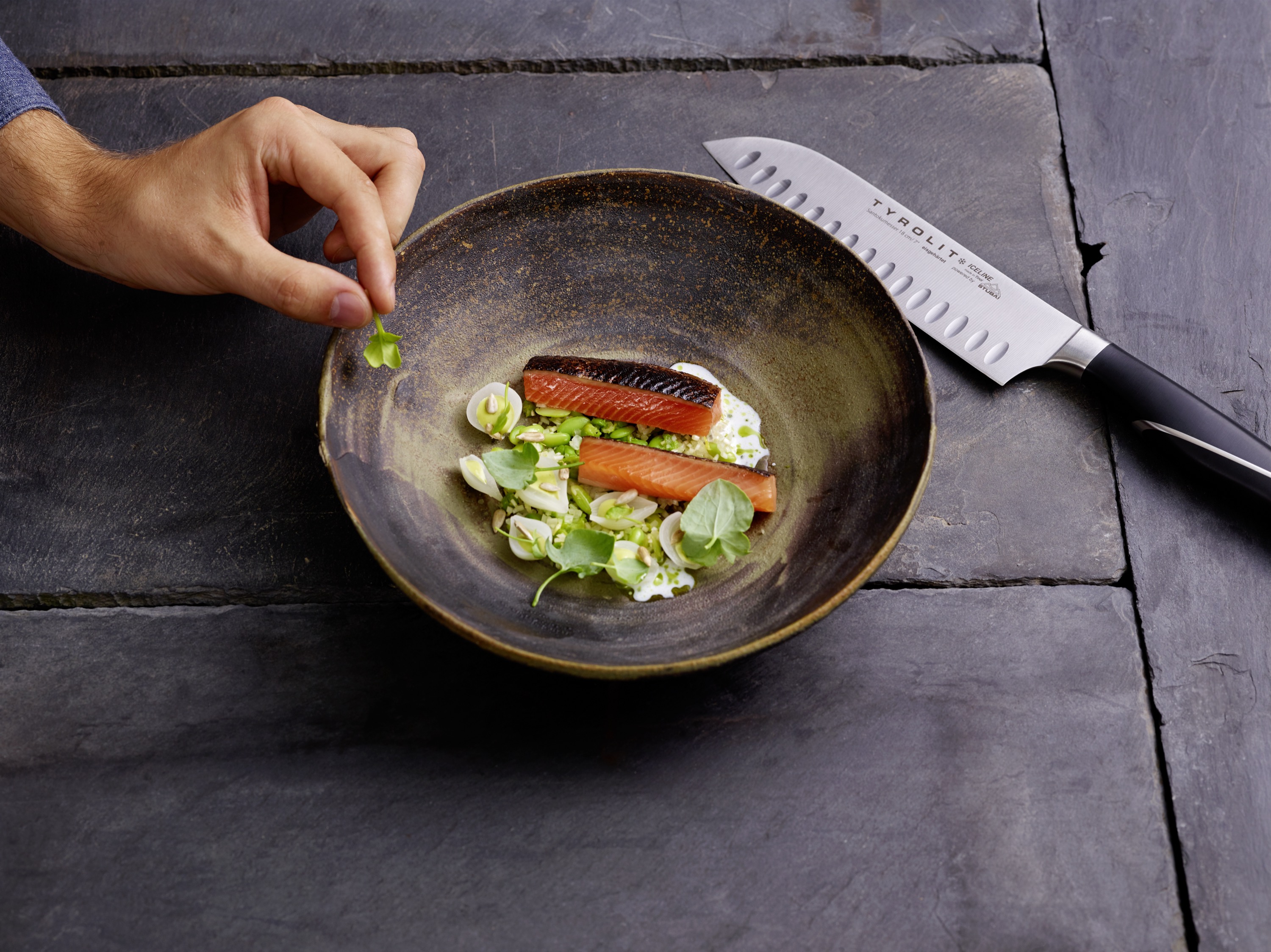What are the advantages and disadvantages of the Santoku knife?

Welche Vorzüge und mögliche Schwächen birgt das Santokumesser? Das Santoku, ein Juwel der japanischen Schmiedekunst, hat sich längst seinen Platz in modernen Küchen erobert. Als vielseitiges Küchenwerkzeug wird es oft als das japanische Pendant zum klassischen Kochmesser betrachtet.
In this post, we take a close look at the strengths and weaknesses of the santoku knife to help you decide if it is the right tool for your cooking needs.
Advantages of the Santoku knife – these are its strengths
The santoku knife excels in a variety of benefits that make it an indispensable tool in the kitchen. Its unique strengths extend across different aspects that make cooking a pleasant and efficient experience.
One knife – many possibilities
The Santoku knife presents itself as a true all-round talent in the kitchen, whose variety of applications is impressive. With its wide, short blade, it shows its strengths in precise cutting, be it portioning steaks or cutting fish.
The efficient handling also extends to the fine chopping of vegetables, from delicate dices to precise julienne strips. This versatility makes the Santoku knife an indispensable companion for a wide array of culinary tasks, both for hobby and professional chefs.
Short blade for more precision
The short blade of the Santoku knife is a key characteristic that provides exceptional precision. This attribute enables the finest cuts, whether it be in the precise slicing of vegetables or the accurate portioning of meat.
Due to the shortened length, the knife allows a high level of control over the cutting process, which distinguishes it especially for fine kitchen work. Even amateur chefs appreciate the user-friendliness of the santoku knife, although some models are also available in different blade lengths. The santoku knife from Tyrolit Life, for example, is available in blade lengths of 12 cm and 18 cm.
Ample space on the blade
The Santoku knife provides generously sized space on the blade, offering two advantages.
- The generous area allows efficient processing of food and facilitates handling, especially for larger cutting tasks. Provided with enough space, amateur and professional chefs alike can work precisely and effortlessly.
- The wide blade also excels at transporting food, like swiftly scooping up chopped onions or aromatic herbs to skillfully slide them into the hot pan.
Smooth transition between blade and handle
The Santoku knife typically features a seamless transition between the blade and handle, ensuring an ergonomic and balanced design. This thoughtful construction allows for precise control of the knife while simultaneously protecting the fingers.
The seamless transition minimizes the risk of injuries and promotes a natural grip, which is particularly beneficial during prolonged cutting tasks. Thanks to this ergonomic design, the santoku knife becomes a dependable kitchen tool, guaranteeing efficient, safe, and enjoyable use.
Schwächen und Nachteile des Santokumessers
Trotz seiner vielseitigen Stärken weist das Santokumesser einige potenzielle Schwächen und Nachteile auf, die bei der Nutzung berücksichtigt werden sollten. Diese gilt es zu kennen, um eine informierte Entscheidung beim Kauf eines Santokumessers zu treffen.
Chopping can be challenging
A potential weakness of the santoku knife is especially apparent when chopping larger, harder ingredients. Due to the shorter blade and light weight, there may be limitations, especially when compared to longer chef’s knives.
European Santoku knives can sometimes compensate for this weakness, although this varies by model. Therefore, for kitchen tasks that rely heavily on chopping techniques, reaching for a longer chef’s knife is often advisable.
A wider tip is not always desired
Another weakness of the santoku knife lies in the wider tip compared to classic chef’s knives. This property, which gives the santoku knife some strength, may prove less beneficial in certain situations.
For instance, the broader tip could make peeling vegetables or slicing meat more challenging. In scenarios where a finer point is required, other specialized types of knives might be better suited – such as a boning knife or a carving knife.
Increased effort due to reduced leverage
Another limitation of the santoku knife is its lower leverage due to the shorter blade compared to some classic chef’s knives. This may result in more effort being required for certain cutting tasks, especially harder foods, such as pumpkin or hard vegetables.
The use of longer chef’s knives often allows better transmission of the cutting force. Alternatively, it may also be worthwhile to look for a comparatively long santoku knife in order not to have to forego the numerous advantages of this type of knife.
Compensate for weaknesses – with knife sets from Tyrolit Life
The santoku knife is a true all-rounder in the kitchen – its short, wide blade makes it shine especially during precise cutting tasks. But for all those who want to compensate for the few weaknesses of this knife, the high-quality knife sets from Tyrolit Life offer an ideal solution.
These knife sets showcase premium quality suitable for both culinary professionals and home chefs, featuring a variety of knife types depending on the chosen set. Among the selection, one can find not only a Santoku knife but also specialized types like a cheese knife, carving knife, or even a classic chef’s knife.
For the safe storage of your Santoku knife and other cutting utensils in your knife set, options include knife drawers or knife blocks. The magnetic knife block by Tyrolit Life, crafted from domestic oak wood, offers secure storage for up to six knives. Additionally, it features an integrated knife sharpener with a preset sharpening angle of 15 degrees, should the Santoku knife become blunt over time.
Proper care and storage, including sharpening and honing of the Santoku knife, is crucial for the longevity of the knives. As one of the leading manufacturers of bonded abrasives, Tyrolit offers knife sharpeners with a pre-set sharpening angle under the Tyrolit Life brand. Cutting boards with integrated sharpening stones made of high-quality beech wood complete the accessories, ensuring the knives’ sharpness is maintained and allowing for effortless resharpening.
Santoku knife – the Japanese counterpart to the chef’s knife
Was ist das Santokumesser genau? Das Santokumesser hat sich weltweit einen Namen gemacht und wird oft als japanisches Pendant zum traditionellen Kochmesser betrachtet. Um sich ein besseres Bild davon zu machen, was ein Santokumesser ist, lohnt sich ein Blick auf die Klinge dieses Messers: Es zeichnet sich nämlich durch eine breitere und kürzere Klinge aus und wird für seine Vielseitigkeit beim Schneiden von Fleisch, Fisch und Gemüse geschätzt. Daher leitet sich auch sein Name ab – frei übersetzt ist es das Messer der drei Tugenden.
What is a santoku knife? The Japanese all-rounder of chef’s knives
The Santoku knife is a true kitchen knife all-rounder and an ideal addition to the classic European chef’s knife. Read more!
There are Japanese knives and European variants of the santoku knife. The Japanese models usually have a thinner blade for particularly precise work. European versions, on the other hand, offer a combination of Japanese precision and increased stability when cutting due to the wider blade. Despite different styles, all Santoku knives share the characteristic short, wide blade.
Compared to the classic chef’s knife, the Santoku knife exhibits significant differences. The shorter and wider blade facilitates precise handling. The flatter edge promotes fine slicing, and the frequently used hollow ground reduces food sticking.
These characteristics make the santoku knife a versatile tool for meat, fish and vegetables. The cultural significance and craftsmanship behind the santoku knife give this kitchen utensil a special status.
Sie interessieren sich mehr für die japanische Messerkunst? Lesen Sie mehr im Artikel: Was genau sind japanische Messer?
FAQs about the Santoku Knife
What does “Santoku” mean in German?
What do I cut with a santoku knife?
How do you cut with a Santoku knife?




